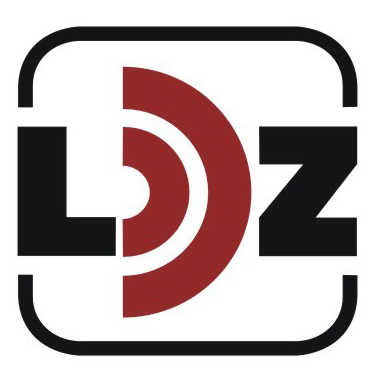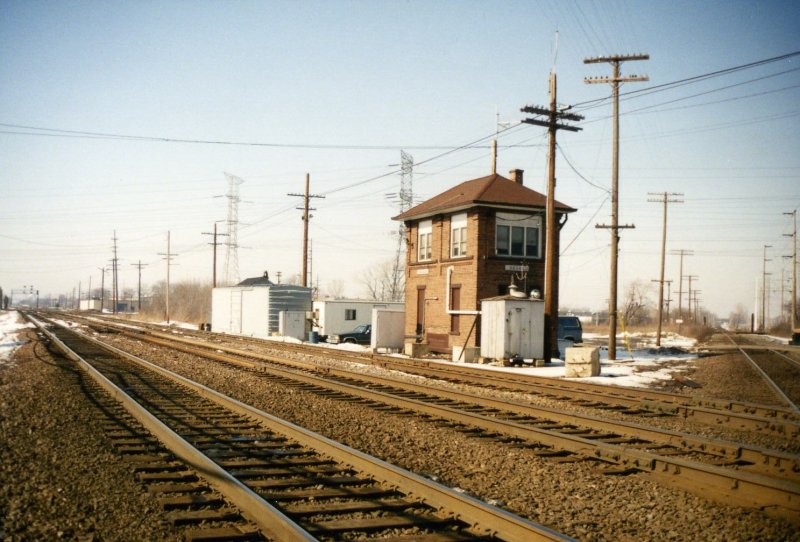|
Latvijas Dzelzceļš
Latvijas dzelzceļš (', abbr. LDz) is the state-owned company responsible for managing public railway infrastructure in Latvia. It is fully owned by the Latvian government, with 100% of its shares held by the state. The company’s sole shareholder is the Latvian Ministry of Transport. Latvijas dzelzceļš was founded on 2 September 1991 and is considered the successor of the Latvian State Railways () company which was established on 5 August 1919 and dissolved by the Soviet occupation of Latvia in 1940. Latvijas dzelzceļš is the controlling company of the Latvijas dzelzceļš Group, and provides a range of services, including the management of public railway infrastructure, service facility operations (freight wagon assembly handling, wagon maintenance and inspection, maintenance and development of passenger stations and stops), electricity distribution and trade, real estate rental, information technology, electronic communications, as well as other principal services. Th ... [...More Info...] [...Related Items...] OR: [Wikipedia] [Google] [Baidu] |
Pasažieru Vilciens
AS Pasažieru vilciens, operating as Vivi, is the sole passenger railway operator in Latvia, operating both electric locomotive, electric and Diesel locomotive, diesel trains on various lines throughout the country. Officially named ''Joint-stock company, AS "Pasažieru vilciens"'' (', abbreviated: PV), the company was founded in November 2001. It is fully owned by the Government of Latvia, Latvian state, with the Ministry of Transport (Latvia), Ministry of Transport acting as shareholder. History Pasažieru vilciens was established in 2001 through the merger of two separate companies, ''Elektrovilciens'' ("Electric Train") and ''PPU Dīzeļvilciens'' ("Diesel Train"), which were subsidiaries of the state-owned Latvian Railways, Latvijas Dzelzceļš (Latvian Railways, LDz). The company was created to separate domestic passenger services from other functions managed by LDz. Initially, Pasažieru vilciens was a 100% subsidiary of Latvijas Dzelzceļš, but in October 2008, it bec ... [...More Info...] [...Related Items...] OR: [Wikipedia] [Google] [Baidu] |
Daugava River
The Daugava ( ), also known as the Western Dvina or the Väina River, is a large river rising in the Valdai Hills of Russia that flows through Belarus and Latvia into the Gulf of Riga of the Baltic Sea. The Daugava rises close to the source of the Volga. It is in length, of which are in Latvia and in Russia. It is a westward-flowing river, tracing out a great south-bending curve as it passes through northern Belarus. The city of Ķekava is located 6 miles south of the west bank of the river. Latvia's capital, Riga, bridges the river's estuary four times. Built on both riverbanks, the city centre is from the river's mouth and is a significant port. Etymology According to Max Vasmer's ''Etymological Dictionary'', the toponym Dvina cannot stem from a Uralic language; instead, it possibly comes from an Indo-European word which used to mean 'river' or 'stream'. The name ''Dvina'' strongly resembles '' Danuvius'' which is itself derived from the Proto-Indo-European ''*dānu' ... [...More Info...] [...Related Items...] OR: [Wikipedia] [Google] [Baidu] |
LDz Logo
Latvijas dzelzceļš (', abbr. LDz) is the state-owned company responsible for managing public railway infrastructure in Latvia. It is fully owned by the Government of Latvia, Latvian government, with 100% of its shares held by the state. The company’s sole shareholder is the Ministry of Transport (Latvia), Latvian Ministry of Transport. Latvijas dzelzceļš was founded on 2 September 1991 and is considered the successor of the Latvian State Railways () company which was established on 5 August 1919 and dissolved by the Soviet occupation of Latvia in 1940. Latvijas dzelzceļš is the controlling company of the Latvijas dzelzceļš Group, and provides a range of services, including the management of public railway infrastructure, service facility operations (freight wagon assembly handling, wagon maintenance and inspection, maintenance and development of passenger stations and stops), electricity distribution and trade, real estate rental, information technology, electronic comm ... [...More Info...] [...Related Items...] OR: [Wikipedia] [Google] [Baidu] |
Kaliningrad Oblast
Kaliningrad Oblast () is the westernmost federal subjects of Russia, federal subject of the Russian Federation. It is a Enclave and exclave, semi-exclave on the Baltic Sea within the Baltic region of Prussia (region), Prussia, surrounded by Poland to the south and Lithuania to the north and east. The largest city and administrative centre is the city of Kaliningrad. The port city of Baltiysk is Russia's only port on the Baltic Sea that remains ice-free in winter. Kaliningrad Oblast had a population of roughly one million in the 2021 Russian census. It has an area of . Various peoples, including Lithuanians, Germans, and Polish people, Poles, lived on the land which is now Kaliningrad. The territory was formerly the northern part of East Prussia. With the defeat of Nazi Germany in World War II, the territory was annexed to the Russian Soviet Federative Socialist Republic, Russian SFSR by the Soviet Union. Following the Aftermath of World War II, post-war migration and Flight and e ... [...More Info...] [...Related Items...] OR: [Wikipedia] [Google] [Baidu] |
Lithuania
Lithuania, officially the Republic of Lithuania, is a country in the Baltic region of Europe. It is one of three Baltic states and lies on the eastern shore of the Baltic Sea, bordered by Latvia to the north, Belarus to the east and south, Poland to the south, and the Russian exclave, semi-exclave of Kaliningrad Oblast to the southwest, with a Maritime boundary, maritime border with Sweden to the west. Lithuania covers an area of , with a population of 2.89 million. Its capital and largest city is Vilnius; other major cities include Kaunas, Klaipėda, Šiauliai and Panevėžys. Lithuanians who are the titular nation and form the majority of the country's population, belong to the ethnolinguistic group of Balts and speak Lithuanian language, Lithuanian. For millennia, the southeastern shores of the Baltic Sea were inhabited by various Balts, Baltic tribes. In the 1230s, Lithuanian lands were united for the first time by Mindaugas, who formed the Kingdom of Lithuania on 6 July ... [...More Info...] [...Related Items...] OR: [Wikipedia] [Google] [Baidu] |
Estonia
Estonia, officially the Republic of Estonia, is a country in Northern Europe. It is bordered to the north by the Gulf of Finland across from Finland, to the west by the Baltic Sea across from Sweden, to the south by Latvia, and to the east by Russia. The territory of Estonia consists of the mainland, the larger islands of Saaremaa and Hiiumaa, and over 2,300 other islands and islets on the east coast of the Baltic Sea. Its capital Tallinn and Tartu are the two largest List of cities and towns in Estonia, urban areas. The Estonian language is the official language and the first language of the Estonians, majority of its population of nearly 1.4 million. Estonia is one of the least populous members of the European Union and NATO. Present-day Estonia has been inhabited since at least 9,000 BC. The Ancient Estonia#Early Middle Ages, medieval indigenous population of Estonia was one of the last pagan civilisations in Europe to adopt Christianity following the Northern Crusades in the ... [...More Info...] [...Related Items...] OR: [Wikipedia] [Google] [Baidu] |
Rīgas Vagonbūves Rūpnīca
Rīgas Vagonbūves Rūpnīca (RVR) was a Latvian rail and tram vehicle manufacturer, most notable for its multiple unit trains and tram vehicles used throughout the Soviet Union and its successor states. It has been insolvent and non-operational since 2017. History The original works were founded in 1895 by the businessman Oscar Freywirth under the name Fēnikss. In 1936, Fenikss was reorganised into Joint Stock Company Vairogs, which later manufactured Ford-Vairogs automobiles under licence. Expropriated by the state following the takeover of Latvia by the Soviet Union and renamed RVR, it became for many years the largest producer of Electric multiple unit, electric and Diesel multiple unit, diesel trains in the USSR and also produced tramcars. Its best known products are the ER1 electric trainset, ER1, ER2 electric trainset, ER2, ER7 electric trainset, ER7, ER9 electric trainset, ER9 and ER31 electric trainset, ER31 electric trains, DR1 diesel train, DR1, DR1A diesel trai ... [...More Info...] [...Related Items...] OR: [Wikipedia] [Google] [Baidu] |
Soviet Re-occupation Of The Baltic States (1944)
The Soviet Union (USSR) occupied most of the territory of the Baltic states in its 1944 Baltic Offensive during World War II. Dear (2001). p. 85. The Red Army regained control over the three Baltic capitals and encircled retreating Wehrmacht and Latvian forces in the Courland Pocket where they held out until the final German surrender at the end of the war. Soviet offensives and re-occupation By 2 February 1944 the siege of Leningrad was over and the Soviet troops were on the border with Estonia. Bellamy (2007). p. 621. Having failed to break through, the Soviets launched the Tartu Offensive on 10 August, and the Baltic Offensive on 14 September with forces totalling 1.5 million. The High Command of the German Army issued Operation Aster on 16 September, whereby the Estonian forces would cover the German withdrawal. Bellamy (2007). p. 622. Soon after the Soviet reoccupation of the Estonian capital Tallinn, the first mission of the NKVD was to stop anyone escaping fr ... [...More Info...] [...Related Items...] OR: [Wikipedia] [Google] [Baidu] |
World War II
World War II or the Second World War (1 September 1939 – 2 September 1945) was a World war, global conflict between two coalitions: the Allies of World War II, Allies and the Axis powers. World War II by country, Nearly all of the world's countries participated, with many nations mobilising all resources in pursuit of total war. Tanks in World War II, Tanks and Air warfare of World War II, aircraft played major roles, enabling the strategic bombing of cities and delivery of the Atomic bombings of Hiroshima and Nagasaki, first and only nuclear weapons ever used in war. World War II is the List of wars by death toll, deadliest conflict in history, causing World War II casualties, the death of 70 to 85 million people, more than half of whom were civilians. Millions died in genocides, including the Holocaust, and by massacres, starvation, and disease. After the Allied victory, Allied-occupied Germany, Germany, Allied-occupied Austria, Austria, Occupation of Japan, Japan, a ... [...More Info...] [...Related Items...] OR: [Wikipedia] [Google] [Baidu] |
Interlocking
In railway signalling, an interlocking is an arrangement of signal apparatus that prevents conflicting movements through an arrangement of tracks such as junctions or crossings. In North America, a set of signalling appliances and tracks interlocked together are sometimes collectively referred to as an ''interlocking plant'' or just as an ''interlocking''. An interlocking system is designed so that it is impossible to display a signal to proceed unless the route to be used is proven safe. Interlocking is a safety measure designed to prevent signals and points/switches from being changed in an improper sequence. For example, interlocking would prevent a signal from being changed to indicate a diverging route, unless the corresponding points/switches had been changed first. In North America, the official railroad definition of interlocking is: "''An arrangement of signals and signal appliances so interconnected that their movements must succeed each other in proper sequence''". ... [...More Info...] [...Related Items...] OR: [Wikipedia] [Google] [Baidu] |
Nord Express
The ''Nord Express'' (Northern Express) was a long-distance international express train which for more than a century connected Paris with first Russia and later Poland, the Baltic states and Scandinavia. In its heyday before the First World War, it was considered the ultimate luxury train in Europe. Introduced in 1896 by the Compagnie Internationale des Wagons-Lits, which operated sleeping-cars, dining cars and trains deluxe all over Europe, including the Orient Express, it connected Paris and Saint Petersburg. After World War I and the Russian Revolution, the train's route was shortened to Warsaw and Riga instead of Saint Petersburg. And after World War II the "Iron Curtain" diverted the train's route further to Stockholm and Oslo, until air travel caused the end to this famous train. Although the Nord Express has received significantly less attention than the Orient Express, it is one of the CIWL's best-known luxury trains and has been featured in a number of artistic wor ... [...More Info...] [...Related Items...] OR: [Wikipedia] [Google] [Baidu] |
Independence Day (Latvia)
Latvia's Independence Day, officially known as the Proclamation Day of the Republic of Latvia, is celebrated annually on 18 November in Latvia. It marks the anniversary of the Proclamation of Independence of Latvia by the People's Council of Latvia in 1918. Observances Various public events take place all over the country, including concerts and fireworks. Torchlight processions held by various organizations have been part of Proclamation Day celebrations and Lāčplēsis Day celebrations since the 1920s. The largest torchlight procession organized by the National Alliance takes place in the capital city Riga and attracts thousands of participants every year. Its route through the streets of the city centre traditionally starts at the monument of Kārlis Ulmanis, the first prime minister of Latvia, and ends at the Freedom Monument. A popular modern tradition established in 2009, is for people all over the world to sing the Latvian national anthem ''Dievs, svētī Latviju!'' at ... [...More Info...] [...Related Items...] OR: [Wikipedia] [Google] [Baidu] |








